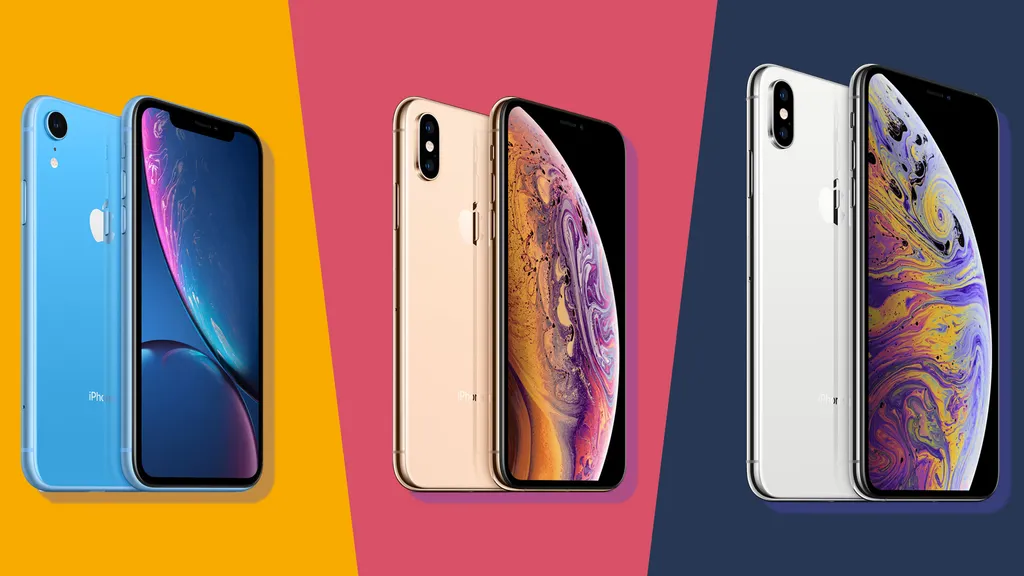iPhone XS vs iPhone XS Max vs iPhone XR

At first glance, the iPhone XS vs iPhone XS Max vs iPhone XR comparison doesn't reveal much difference. But after handling and reviewing all three of these venerable flagships, we've developed an in-depth idea of how each has its own great selling points and is suitable for particular tastes and needs.
This generation was the first time Apple released three new iPhones at once, giving us a trio of powerful flagship handsets that differ in size, camera quality, specs, and price. Now that the iPhone 11 and iPhone 11 Pro are here, the previous year's Apple flagships aren't quite the best iPhones on the market, though they're close - and still incredible phones, especially with all the new features (like Dark Mode) in iOS 13.
But which one is for you?
The iPhone XS is technically the flagship phone, and also the smallest of the bunch. Naturally, the iPhone XS Max is its bigger sibling with the largest screen. The iPhone XR is the leaner, lower-cost ‘budget flagship’ that’s sized somewhere between the other two and drops a few perks in order to save costs.
But that oversimplifies the three phones - each has its pros and cons. If you’re on the hunt for one of the latest and greatest iPhones, read on for a breakdown of these top smartphones to find the right one for you. Just keep in mind that Apple only sells the iPhone XR now - but you can easily find the others sold by third parties.

iPhone XS vs iPhone XS Max vs iPhone XR price and availability
The quick-and-dirty: the iPhone XR is sizeably cheaper, a true ‘budget flagship’ that starts at $599 / £629 / AU$1,049 for the 64GB model ($649 / £679 / AU$1,129 for 128GB and, while you can still find the 256GB model, Apple doesn't sell it). That is, as we’re fond of saying, a 2018 phone at 2016 prices, one that's still suitable for 2019 and been discounted after the release of the new phones.
Of course, the iPhone XS somewhat exceeds the XR in many ways and you’ll be able to buy it with more storage. For that, you’ll pay a premium: the iPhone XS's launch price was $999 / £999 / AU$1,629 (or $1,149 / £1,149 / AU$1,879 for 256GB, and $1,349 / £1,349 / AU$2,199 for 512GB) - but after the release of the iPhone 11 line, Apple no longer sells the iPhone XS or XS Max itself. If you do find it sold by a third party, you'll almost certainly pay less.
If you want the bigger size of the iPhone XS Max, expect bigger prices: its launch pricing started at $1,099 / £1,099 / AU$1,799 for the 64GB model, while the 256GB model is $1,249 / £1,249 / AU$2,049 and the most expensive 512GB version will set you back a staggering $1,449 / £1,449 / AU$2,369. Again, expect discounts.

iPhone XS vs iPhone XS Max vs iPhone XR design
Overall, not much has changed in the house of Apple since the release of the iPhone X toward the end of 2017 - which isn’t a bad thing. All three of these models follow the same broad design: front and rear glass sandwiching an aluminum frame, with rounded corners and a healthy notch cut out of the top front display.
The widest difference between the three phones is size. The iPhone XS (143.6 x 70.9 x 7.7 mm) is the smallest, with a 5.8-inch screen - a phone ideally suited for users with smaller hands or who prefer using their device one-handed. It weighs the least, at 177g, which is respectable but still not as light as some Android phones.
It’s an objectively attractive handset, with sleek glass and minimal bezel. Its two rear cameras line up vertically on the top left of the phone’s back. You can get it in silver, space gray, or the always-popular gold.
The iPhone XS Max (157.5 x 77.4 x 7.7 mm) is simply a larger version, with a 6.5-inch display that provides noticeably more screen real-estate. It’s otherwise identical, leaving your choice down to aesthetics: do you want a larger phone? Do you mind using two hands to use it?
Finally, the iPhone XR (150.9 x 75.7 x 8.3 mm) looks similar but has a few nods toward simplicity in its design: it has a single rear lens and, instead of metallic hues, comes in bright primary colors, white, and black. It’s also (.6mm) thicker than the other two. Its 6.1-inch screen puts it squarely between the other two phones in size, giving users a just-right option if the XS is too small and XS Max too large.
One more note: though Apple still hasn’t allowed dual SIM card trays in its phones (except in China, for reasons) nor expandable storage, all three of these phones get compromise - eSIM. You can register an internal SIM for a separate number with a wireless carrier that supports eSIM, as Apple’s support page explains.